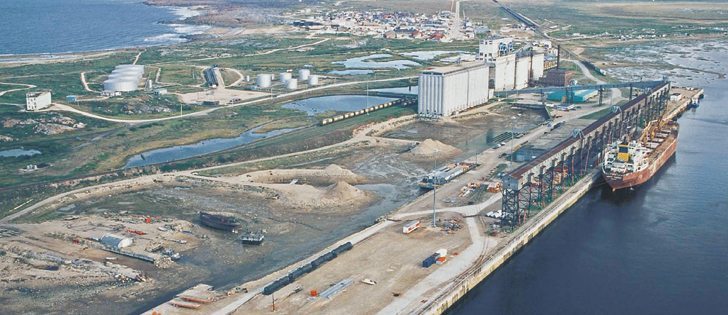Port of Churchill | Facility would study impact shipping has on Arctic ecosystems while reinforcing Canada’s northern presence
Researchers at the University of Manitoba hope to raise $28 million to build a new marine research centre at the Port of Churchill in northern Manitoba.
David Barber, an Arctic research expert from the University of Manitoba, said the Churchill Marine Observatory, if approved, would host 100 scientists a year from around the world.
The observatory would serve as a base for research projects, most notably the impact of increased shipping and industrial activity on Arctic ice and marine ecosystems.
A key area of research would examine the potential environmental impacts of accidental spills of contaminants shipped through the port, including crude oil, fertilizers and chemicals.
Read Also

Farming Smarter receives financial boost from Alberta government for potato research
Farming Smarter near Lethbridge got a boost to its research equipment, thanks to the Alberta government’s increase in funding for research associations.
“We believe, from a scientific perspective, that we need to get a much better handle on the ability to detect any kind of spill of oil on sea ice,” said Barber, a Canada research chair in Arctic system science.
“We need to be able to look at the impacts of that on the marine ecosystem and we need to develop different mitigation strategies so that if we do have a spill, we have ways of cleaning it up.”
The proposed centre would include two large, self-contained pools that would be used to grow and observe sea ice.
Once established, the ice could be exposed to contaminants in a closed environment under controlled conditions.
The pools would be enclosed by a retractable roof, which could be opened and closed to expose the ice to sunlight, wind and other environmental conditions.
The proposed facility would be built on Port of Churchill property, close to the pier but far enough away to ensure that it would not interfere with ship traffic.
“We believe this kind of research is essential for moving forward to make sure we understand the consequences of this industrial development in the Arctic,” said Barber, who spoke recently to members of the Hudson Bay Route Association.
Another key component of the proposed research centre would be remote, automated instruments designed to observe environmental conditions in shipping lanes, including sea ice thickness.
The remote instruments would be located in Hudson Bay and Hudson Strait and would be part of a larger national monitoring system in Baffin Bay, the southern Beaufort Sea and the Canadian Arctic archipelago.
“These (remote) observatories will tell us about the transportation corridors to and from the Port of Churchill,” Barber said.
The sensors would assess current ice conditions and allow scientists to formulate more accurate predictions of future sea ice conditions.
Gaining a better understanding of Arctic ice in and around Hudson Bay could eventually lead to an extended shipping season at Churchill.
The Canadian universities involved in the project include the U of M, the University of Calgary, the University of Victoria, Laval University and Dalhousie University.
The province of Manitoba is also a partner.
OmniTrax Canada, which owns the Port of Churchill, has also been identified as a potential contributor.
Merv Tweed, president of OmniTrax Canada, said his company is aware of the plans and is examining the proposal to ensure it does not work at odds with the port’s other priorities.
“We have an asset that we’re trying to grow and develop, and if you plunk any kind of another facility down there, it could create challenges for us in the future,” he said.
“What he (Barber) is proposing … is to put a facility on our property at the port. We’re fully supportive of what he’s doing, but we just have some details that we have to work out to satisfy both our company and the scientists that want to be there.”
Tweed said OmniTrax Canada sees increased crude shipments through the northern port as a significant business opportunity.
“We were advised by the federal government and the province of Manitoba … that we have to look at alternatives to expand our operation,” he said. “We see (crude oil) as an opportunity.”


















